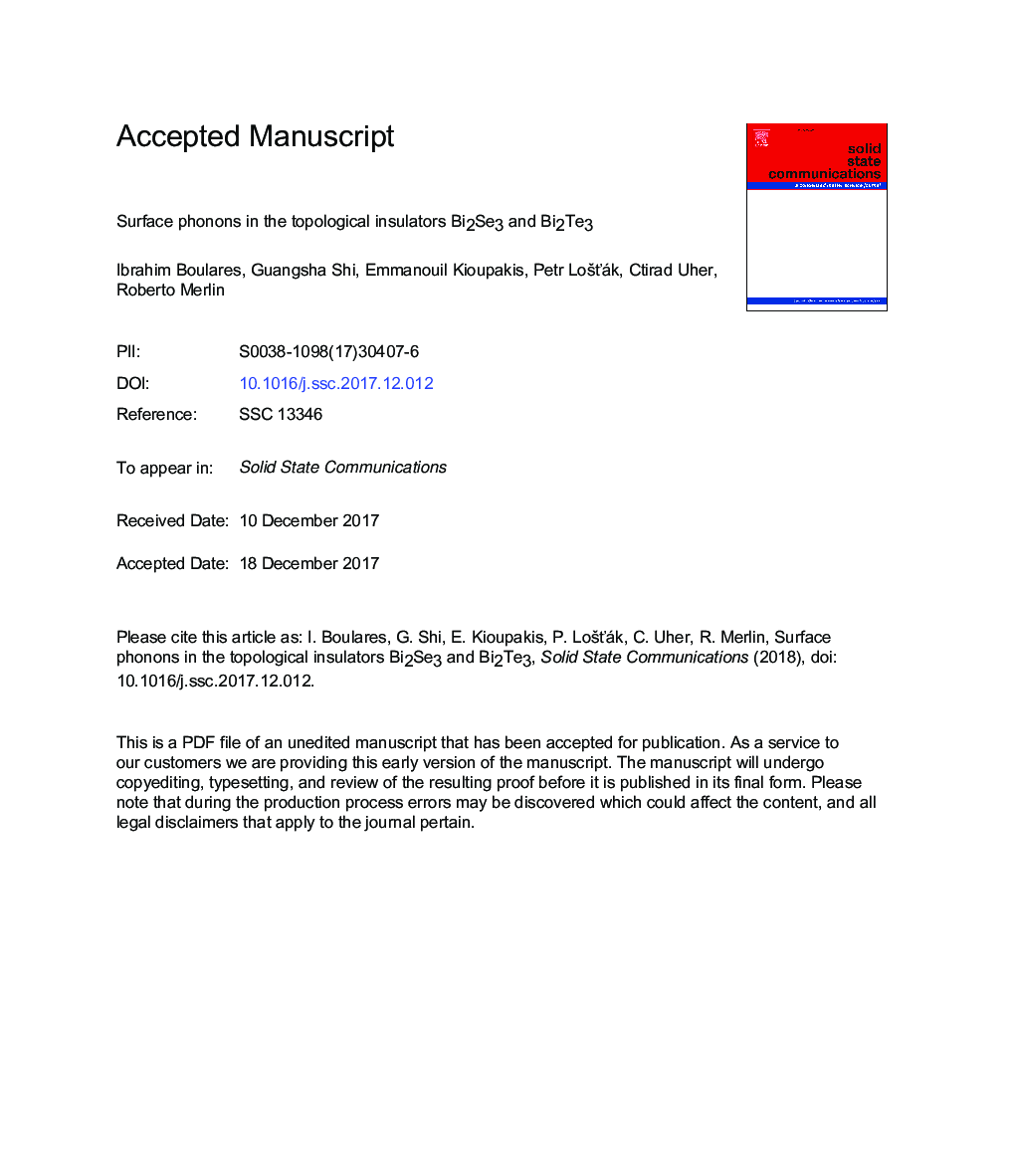| Article ID | Journal | Published Year | Pages | File Type |
|---|---|---|---|---|
| 7987940 | Solid State Communications | 2018 | 21 Pages |
Abstract
Raman scattering [K. M. F. Shahil et al., Appl. Phys. Lett. 96, 153103 (2010), V. Gnezdilov et al., Phys. Rev. B 84, 195118 (2011) and H. -H. Kung et al., Phys. Rev. B 95, 245406 (2017)], inelastic helium scattering [X. Zhu et al., Phys. Rev. Lett. 107, 186102 (2011)] and photoemission experiments [J. A. Sobota et al., Phys. Rev. Lett. 113, 157401 (2014)] on the topological insulators Bi2Se3 and Bi2Te3 show features in the rangeâ¯â¼â¯50-160â¯cmâ1, which have been assigned alternatively to Raman-forbidden, bulk infrared modes arising from symmetry breaking at the surface or to surface phonons, which couple to the topologically protected electronic states. Here, we present temperature- and wavelength- dependent Raman studies showing additional modes we ascribe to surface phonons in both Bi2Se3 and Bi2Te3. Our assignment is supported by density functional theory calculations revealing surface phonons at frequencies close to those of the extra peaks in the Raman data. The theoretical results also indicate that these modes are not a consequence of spin-orbit coupling and, thus, that their occurrence is unrelated to the topological properties of these materials.
Related Topics
Physical Sciences and Engineering
Materials Science
Materials Science (General)
Authors
Ibrahim Boulares, Guangsha Shi, Emmanouil Kioupakis, Petr LoÅ¡Å¥ák, Ctirad Uher, Roberto Merlin,
